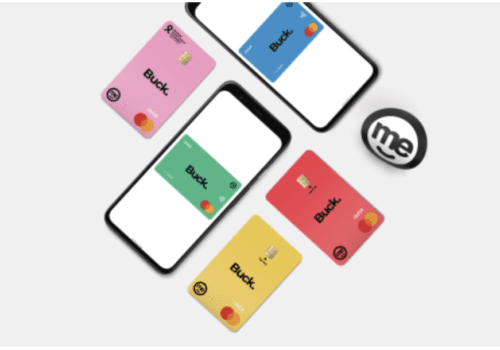The advancement in technology and the RBI (Reserve bank of India) has made it easier to transfer the payment in real-time online through the RTGS and NEFT technique. However, the transfer of payment through cheque has its significance.
And still today, up to 80% of the total payments are cleared through the cheque method, especially the transactions of heavier amounts.
In this article, you will learn about the features of CTS cheques. How can you find your CTS cheque etc. but, before digging the dipper let’s understand the basic concept of CTS and its significance? So, start from the beginning to understand what exactly the CTS stands for?
What Does CTS Mean?
The term CTS stands for the Cheque truncation system, which is used to clear the cheques faster. This system is undertaken by the RBI (Reserve Bank of India).
Under truncation, an electronic form of the cheque is transferred, including all necessary data instead of a physical cheque to be cleared.
Since this idea of CTS cheque was introduced by RBI in 2010. Therefore, it is also called the CTS-2010 cheque.
What Is A CTS Cheque?
CTS cheque is the e-variant of the cheque with all key information that is sent to be cleared. Earlier the physical cheque was transferred to clear it, which was a time-consuming process. The bank needs to move the cheque physically to the cheque clearing house, where the cheques are verified and then get cleared. Then the amount was transferred to your account.
That is why the Reserve bank introduced a cheque truncation system (CTS) to fasten the procedure of cheque clearance. Under this;
- There is no need to transfer the physical cheque; instead, they send an electronic cheque form with relevant details.
- In this process, the bank used to scan the cheque and send the image plus MICR data to the cheque clearinghouse.
- The clearinghouse varies it and forwards the data to the paying bank. The bank also inspects it, matches the signature, photo, and MICR data, and transfers the amount mentioned to the beneficiary account.
- This process of clearing cheques is even faster and safer than the earlier traditional method of cheque clearing.
- This technique is even more cost-effective and convenient for the bankers and the customers too. It also takes less time to get cleared.
As CTS truncates or alters the way of physical cheque movement into electronic. And hence, all the resources related to physical cheque movement are eliminated, and therefore, it is a more cost-effective and energy-saving technique.
Since it brings grace and smoothness to the cheque clearing process, it is practiced worldwide in the banking system.
Also Read: Crossing of Cheques & Its Types
How Do I Find My CTS Cheque?
CTS is not a physical cheque. It’s a cheque truncation system that truncates or alters the physical cheques into an electronic cheque and sends them to the cheque clearing house so that your cheque can be cleared and the amount could be transferred to your account. The truncation process is done in banks to save time and energy in the physical movement of the cheque.
CTS Cheque Features
Following are the key features of the CTS cheque.
Paper
The CTS cheque consists of standard paper that does not glow when Ultra-violet rays fall on it, and it is protected from acids, bleaches, and alkalies. The most important thing is that it provides a visible reaction when a fraudulent attempt is made.
It isn’t very easy to make any alteration to this piece of paper. The quality of paper ensures the feel of cheques which remains uniform for all banks.
Watermark
The CTS cheque has an oval-shaped watermarked with the two words, i.e., CTS-INDIA, which is only visible when you see a good light source or torch flash. Since the paper of this cheque is only provided to some authorized personnel, who are responsible for the cheque printing and handling.
In this scenario, it becomes challenging to make a xerox copy or print the same with any printer as each CTS cheque will have one watermark of CTS-INDIA on it.
Pantograph
The CTS cheque has a hidden pantograph of the word VOID or COPY. This pantograph can be noticed at the left corner on the downside of the cheque, just under the account number mentioned.
This pantograph will be only visible when the cheque is xerox copied or scanned in color. Usually, it is not visible in the scanned copy at the resolution mentioned in the check truncation system (CTS).
Logo
The CTS cheque also has a bank logo on it. This logo is printed in such a way that it will be only visible through the ultraviolet rays.
Color
This document has a pastel or light-colored clutter-free background. It ensures the best quality and also the content of the image on it.
Also Read: What is Cancel Cheque & Why We Need it?
Field Placement In CTS Cheque:
- The bank’s name will be with the proper address with the IFSC code printed on the left side at the top of the cheque.
- On the CTS cheque, blocks are given to write the date in the day, month, and year format (DD/MM/YYYY). This block is generally printed at the top right side of the CTS cheque.
- The phrase CTS-2010 is printed vertically together with the name of the printer. You can observe it on the left side of the CTS cheque.
- The symbol of the new Rupee is printed beside the column provided to fill the amount in figures.
- The specific lines are drawn using micro letters that can be seen for writing the beneficiary (payee) name and amount in words.
- At the bottom of the CTS cheque, a specific is given to put your signature, which is indicated by writing (printed) ‘please sign above.’
- The cheque size of all the banks always remains fixed and the same.
These are the important features of the CTS cheque. Other than it, you are not allowed to alter the cheque paper, printing, or any other mark while filling the cheque.
You can only write the key information whatever you are asking you to fill. It includes the date, name, account number, signature, and amount. It is done to avoid misuse or fraudulent alteration in the cheque.
Also Read: How to Fill a Cheque – 5 Steps Cheque Filling Guide
Is CTS Cheque Mandatory?
The RBI (Reserve Bank of India) has made it mandatory for all branches of the banks to implement CTS (Cheque Truncation System) across the country from September 30, 2021.
To understand the importance of a CTS cheque, first, you need to know the benefits of a CTS cheque.
Since the CTS cheque has the feature of electronic transmission for the clearance of cheque instead of physical movement, which ensures the process to be significantly fast, its shorter cycle of clearing funds ensures the faster clearance of the CTS cheque and speedy transfer of fund credit to your account.
Due to this technology, the exercise of physical cheques from one to another branch of the banks has been stopped, which has reduced the fear of cheque loss during transit, or the chances of mishandling are also avoided.
This type of clearing is restricted to bank branches operating within a specific area or city in the present scenario. However, under the CTS scheme, it has been suggested to integrate a maximum number of clearing houses managed by several banks at different levels so that the cheques can be cleared electronically without any restrictions of a specific area or city.
The banks plan to integrate the cheque clearing house across the country to fasten the cheque clearing system so that any bank could clear the cheque within a maximum of 24 hours in any part of the country.
Earlier, there was a very high chance of fraudulent activities during the physical exercise of the cheque from one bank to another. But, the introduction of the CTS system has eradicated the chance of such fraudulent activities in the cheque system.
There are a lot of security features like encrypted code, watermark, logo, holograms, and encrypted codes at every point of the cheque system to ensure any mishappening through the cheque.
The check truncation system has improved the whole banking system result in providing better service to the customers. And hence the liquidity of the banking system has improved. And it also ensures a safe and secure environment for making payments through the cheque system.
As per the RBI thoughts behind CTS, it brings smoothness to the whole activity of processing cheques to clearing them. CTS is significantly beneficial for the banks in the context of time-saving and cost-effectiveness.
To Sum Up
Despite various modes to instant transfer funds from one account to another, the cheque is most prominently used by various institutions and individuals.
However, the advanced technique of CTS has given an extra layer to the cheque system and in the banking system.
It is one of the revolutionary processes that have great significance on a wide range of banking customers in India and worldwide.
Recommended:
What is Cheque & Different Types of Cheque



